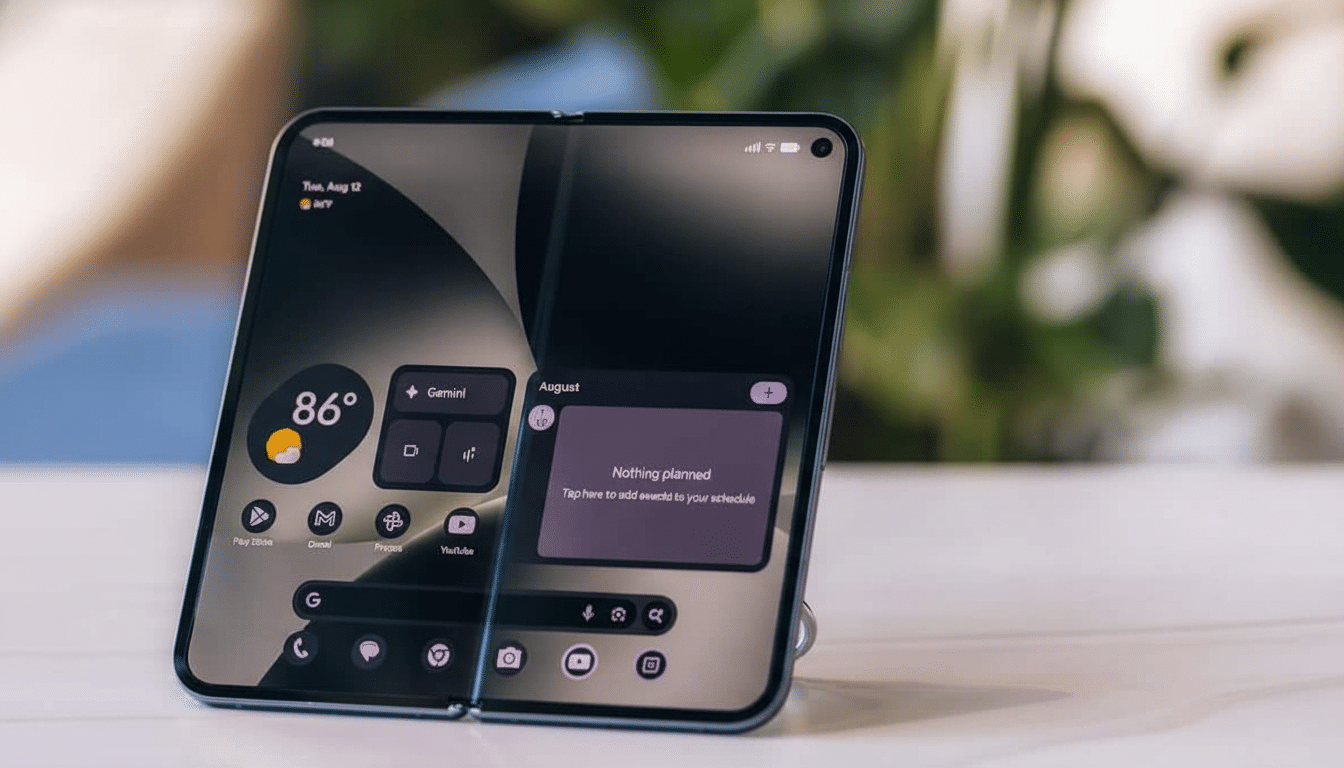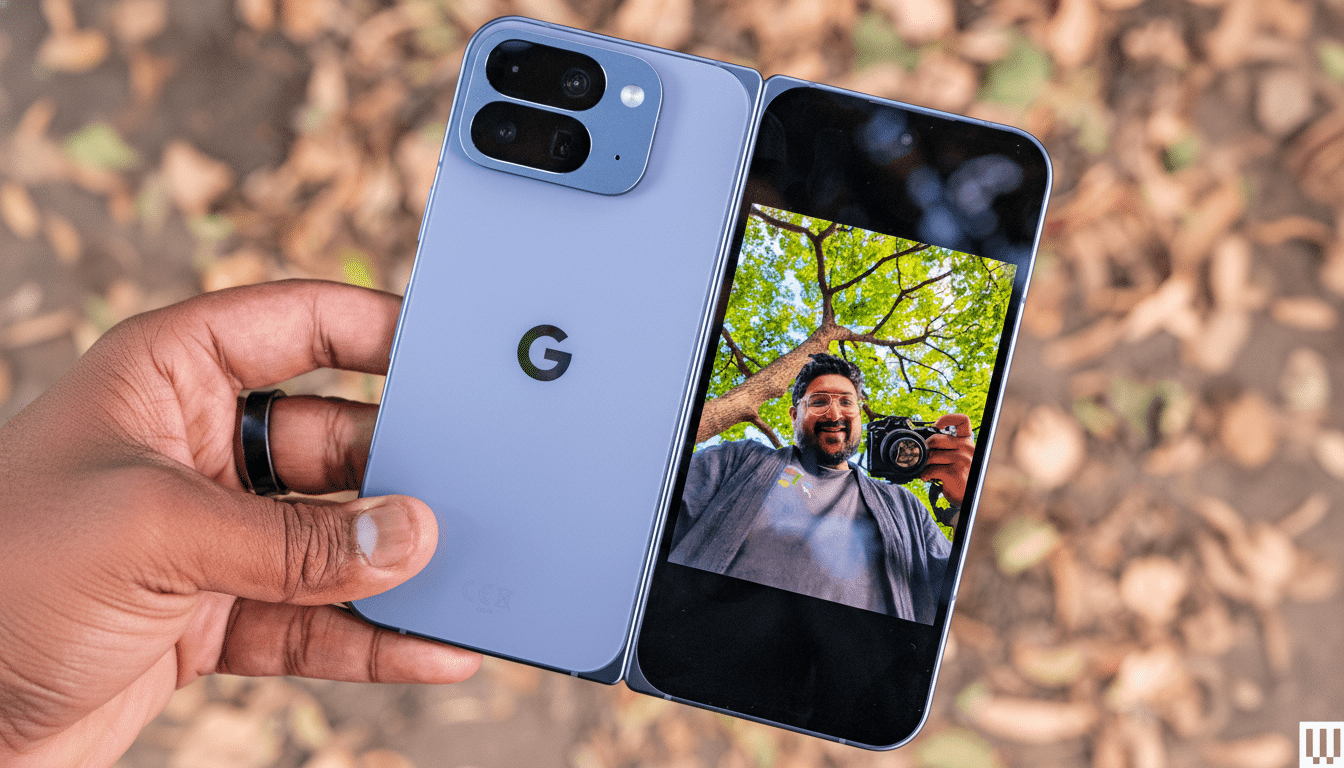One week into my time living with Google’s Pixel 10 Pro Fold, one concern has bubbled up from a nagging doubt to become a serious sticking point. This foldable device nails the big stuff — display quality, build quality, software polish — but the camera system feels like a disparate compromise on a $1,799 “Pro” device. That’s not easy to forget for a company whose reputation was built on computational photography.
The Hardware Wins Make The Camera Gap Louder
The hardware is superb. The 6.4-inch cover screen is bright and well scaled, and the 8-inch inner panel feels velvety smooth and fine-tuned; using Android 16 on the bigger canvas feels just right. Tensor G5 performance has been smooth, 16GB of RAM and UFS 4.0 help keep things moving fast, and the IP68 rating eliminates a common foldable concern. Even little flourishes — such as the included magnets on the newest Pixel 10 series of devices — bring instant utility.

All of that goodness puts even more spotlight on the camera. You expect a halo device to match, or surpass, the best pictures from the brand. No, you do not get a space-grade camera bar from outer space; instead, you see a solid triple cam that’s fine by upper-midrange standards but consistently trails the Pixel 10 Pro and Pro XL in crucial situations.
The Fold Concedes on Camera Sensor Hardware
The Fold’s array, on paper, comprises a 48MP main (f/1.7), a 10.8MP 5x periscope and a 10.5MP ultrawide. The primary and telephoto sensors match up with (and feature almost exactly the same specs as) the base Pixel 10, not the Pro editions. In practice, that means a smaller main sensor and a telephoto that can’t rely on the same pixel pitch or light-gathering performance of the Pro’s module.
There’s a reason this happens. Foldables have punishing packaging constraints: two thin halves, a hinge, vapor chamber, large battery cells and a rigid inner display stack fighting for millimeters. Teardowns of new foldables from companies such as TechInsights consistently reveal camera z-height to be a victim. You can opt for a thin, balanced device or make more room for the camera island. Few have squared that circle.
Real-World Photo and Video Results That Fall Short
Over mixed shooting throughout the course of a week, the differences have held. Backlit scenes — sunsets over water, city skylines at golden hour — caused the Fold’s main sensor to blow out more often than the Pixel 10 Pro. The Pro handled all that brightness via a tighter roll-off and good color fidelity; the Fold got crushed into harsh specular highlights and flatter tonality.
Indoor food scenes were of a piece. The Fold generated photos that appeared to be sharpened to help make up for softer base detail, with labored color in warm lighting. Cleaner micro-contrast and a natural background falloff that wasn’t dependent on aggressive edge detection were results of the Pro’s larger sensor.

5x low light was the most revealing. The sky and foliage were noisy, and I saw micro-jitter despite optical stabilization, especially in the Fold’s darker scenes. The Pro’s tele lens, taking in and processing more light, produced smoother gradients and sharper detail. Computational photography is magical, but it does require strong signals to begin with.
Zoom Flexibility Lags Behind Flagship Peers
The Fold stops at 20x hybrid zoom. That’s fine, but it feels limited in the same lineup that debuted long-range computational zoom up to 100x on the Pixel 10 Pro. The point isn’t that anyone shoots at 100x every day — it’s the range between 10x and 50x, where the Pro’s upscaling and multi-frame fusion are genuinely useful for concerts, wildlife stalking, and architectural details.
This missing link isn’t only a gap internally for Google. Will it change the situation where, as independent testing has consistently shown, foldables sit behind slab flagships in camera rankings, with organizations like DXOMARK showing traditional phones owning the high end of the scale? For its part, industry trackers like Counterpoint Research estimate foldable shipments surpassed 20 million in 2024, at premium prices that beg tougher comparisons. You pay ultra-premium money; you better get some ultra-premium cameras.
What It Means for Pixel Fold Buyers Right Now
If you appreciate a big-screen phone that redefines how you read, multitask, or sketch notes, then watch videos — the Pixel 10 Pro Fold offers a very polished experience. It’s sleek for its class, sturdy by modern standards, and jam-packed with thoughtful software add-ons. For a lot of people that combination will outweigh the camera trade-offs.
But if photography is the reason you purchase a Pixel, the Fold forces you to settle for less than what the current best from the brand offers. The cameras aren’t terrible; they just can’t hang with the Pixel 10 Pro in the same scenes, and are missing the zoom headroom that’s rapidly becoming a flagship differentiator. Unless a future software patch narrows the gap — and physics has constraints — for image-first buyers, the safer bet is still the Pro or Pro XL.
That’s the underlying issue after a week: the Fold is a fantastic foldable that doesn’t really feel like a Pro camera phone. If Google can resolve that tension in the next generation — by managing to give itself enough space for better sensors without it feeling unwieldy — then Google might finally have a Pixel that’s at once both future-foldy and photo-first.

